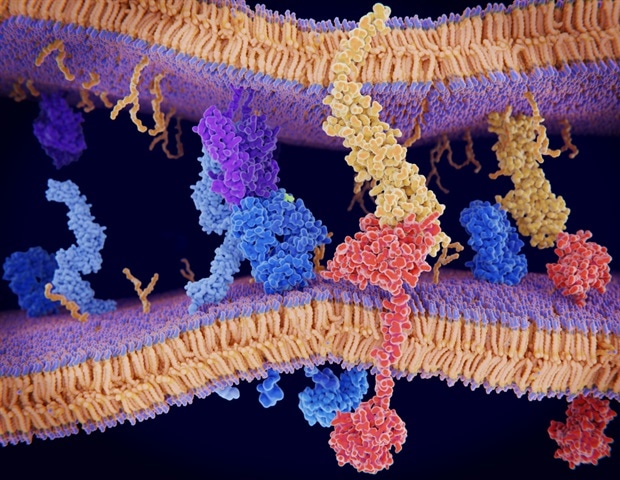
[ad_1]
Scientists have developed a new biomaterial that helps bones heal faster by improving the regenerative capacity of adult stem cells.
The study, led by researchers at RCSI University of Medicine and Health Sciences and Temple Street CHI, is published in the current edition of Biomaterials, the highest-scoring journal in biomaterial science.
Researchers had previously discovered a molecule called JNK3, which is a key factor in children’s stem cells that are more sensitive to their environment and regenerate better than those of adults. This explains, at least in part, why children’s bones are able to heal faster. Based on this knowledge, they created a biomaterial that mimics the structure of bone tissue and incorporates nanoparticles that activate JNK3.
When tested in a preclinical model, the biomaterial quickly repaired large bone defects and reduced inflammation after one month of use. The biomaterial has also proven safer and more effective than other biomaterials loaded with bone repair drugs whose use has been controversially associated with dangerous side effects, including cancer, infection, or off-site bone formation.
Although further testing is needed before clinical trials can begin, these results are very promising. This study showed that understanding stem cell mechanobiology can help identify alternative therapeutic molecules to repair large defects in bones and potentially other body tissues. In a broader sense, this project is a prime example of how growing our understanding of mechanobiology can identify new treatments that directly benefit patients – a key focus of what we do here at RCSI. “
Professor Fergal O’Brien, principal investigator of the study and director of research and innovation at RCSI
The work was done by researchers from the Tissue Engineering Research Group (TERG) and SFI AMBER Center based at RCSI in collaboration with a team from Children’s Health Ireland (CHI) at Temple Street Hospital. The Temple Street CHI team was led by Mr. Dylan Murray, a senior consultant craniofacial, plastic and reconstructive surgeon at the National Pediatric Craniofacial Center (NPCC), who has collaborated with the RCSI team for several years.
“It is very exciting to be part of this translational project where the participation and consent of Temple Street NPCC patients, who donated harvested bone cells, has contributed immensely to this success,” Murray said.
The research was funded by the Children’s Health Foundation Temple Street (RPAC-2013-06), Health Research Board of Ireland under the Health Research Awards – Patient-Oriented Research scheme (HRA-POR-2014-569), European Research Council (ERC) under Horizon 2020 (ReCaP project n.788753) and Science Foundation Ireland (SFI) through the Advanced Materials and Bioengineering Research (AMBER) Center (SFI / 12 / RC / 2278).
“We have now shown that the identification of mechanobiology-inspired therapeutic targets can be used to design intelligent biomaterials that recreate the superior healing capacity of children in adult stem cells,” said Dr. Arlyng Gonzalez Vazquez, first author of the study and researcher in TERG.
“We are using the same strategy to develop a new biomaterial for cartilage repair in adults. A follow-up project recently funded by the Children’s Health Foundation Temple Street also aims to use a similar scientific approach to identify whether the molecular mechanisms found in children diagnosed with craniosynostosis (a condition in which the skull fuses early and in its brain growth) could be used to develop a therapeutic biomaterial that accelerates bone formation and bone healing in adults. “
Source:
Journal reference:
González-Vázquez, A., et al. (2020) Acceleration of bone healing in vivo by exploiting age-altered activation of c-Jun N-terminal kinase 3. Biomaterials. doi.org/10.1016/j.biomaterials.2020.120540.
.
[ad_2]
Source link